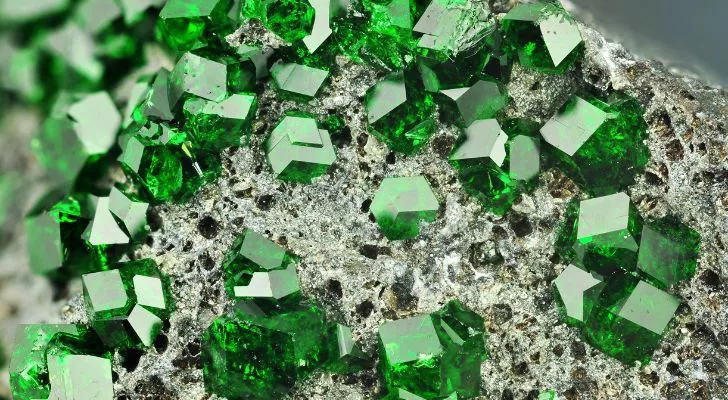Garnet is a beautiful gemstone that is used to represent January’s birthstone.
The gemstone family comes in many colors, but deep red is the most common.
Initially found in Central Europe in the 1500s, this gemstone has kept its place in history.
For many years garnets have appeared on jewelry and decorative accessories. But do you know why garnet became January’s gemstone?
Here are 15 interesting facts about the gemstone garnet.
Garnet was named after the Latin word granatus, meaning pomegranate. This was primarily due to its similarity in red color and the formation and size of the commonly found gemstones.
Garnet is the name for a family of gemstones that are made from the same formation of minerals or crystal structure. The pigment that forms its color is the most notable mineral that changes between garnets.
Garnets come in various colors, such as red, pink, green, orange, yellow, and purple. Red, however, is the most common and most popular.
In ancient times, any red gemstone was called a “carbuncle,” including the garnet. The carbuncle was one of the four gemstones given to Solomon by God.
Garnets as birthstones are believed to bring the wearer health, wealth, and happiness. It is thought that this comes from garnets’ use throughout history.
Garnets have been used in jewelry since the Bronze Age.
Red garnet was very special during the Middle Ages with clergy members and those associated with nobility. Garnets were believed to soothe an angry heart.
In Indian astrology, garnets are believed to help repel negative feelings such as depression and guilt. They also believe that the gemstone gives the wearer greater self-confidence and mental clarity, promoting healthy and creative thoughts.
Garnets have an Isometric crystal system found in metamorphic rocks. These are rocks that have been altered by pressure and heat.
One of the oldest garnet necklaces was found in an Egyptian tomb and is believed to be over 5,000 years old.
On Moh’s scale of mineral hardness on a scale of 1-10, garnet rates between 6.5-7.5. This means garnets are pretty hardy but not as structurally strong as diamonds.
Due to their form, they can be damaged, so it’s less common to find garnets on jewelry worn daily, such as rings. It is more common to find garnets on brooches, earrings, and pendants where the jewelry is less susceptible to wear and tear.
Garnets can be found in many regions around the world. However, Bohemia, Central Europe, is recognized as the primary source during Victorian times.
Nowadays, garnet, in its many colors, is found and mined on the African continent, Brazil, Iran, and Pakistan, to name a few. Different colors are found in other regions of the world due to the mineral form of the gemstone.
Color change garnets are the rarest type of garnet and can change color under different lights, as they are made from a mix of spessartite and pyrope.

This historical gemstone has influenced cultures with its beauty since the Bronze Age. Garnet has appeared on royal accessories to be a stone of nobility.
It’s believed to promote good health, cure angry hearts, promote clarity of the mind, and so much more.
Due to the garnet’s formation, it can be found in various colors, but the red gemstone is the most popular.
So if you are born in January, why not flaunt this historically significant gemstone and boost your confidence?


















